Weihao Tan
Lumine: An Open Recipe for Building Generalist Agents in 3D Open Worlds
Nov 12, 2025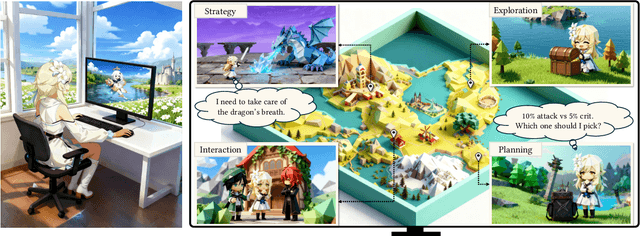

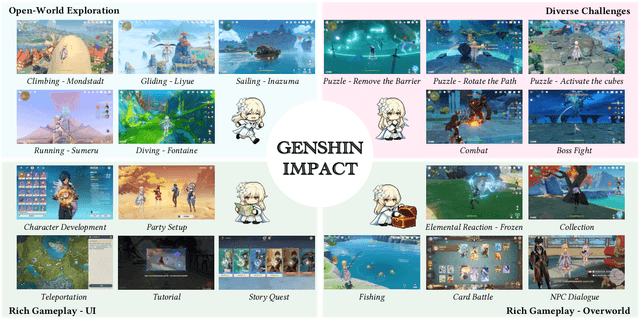
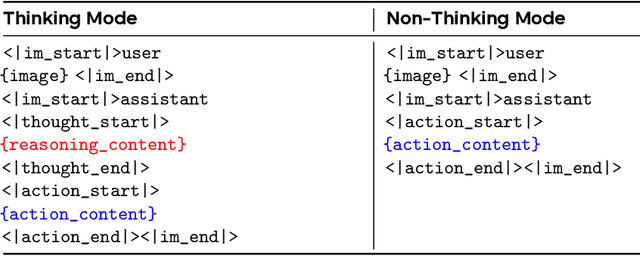
Abstract:We introduce Lumine, the first open recipe for developing generalist agents capable of completing hours-long complex missions in real time within challenging 3D open-world environments. Lumine adopts a human-like interaction paradigm that unifies perception, reasoning, and action in an end-to-end manner, powered by a vision-language model. It processes raw pixels at 5 Hz to produce precise 30 Hz keyboard-mouse actions and adaptively invokes reasoning only when necessary. Trained in Genshin Impact, Lumine successfully completes the entire five-hour Mondstadt main storyline on par with human-level efficiency and follows natural language instructions to perform a broad spectrum of tasks in both 3D open-world exploration and 2D GUI manipulation across collection, combat, puzzle-solving, and NPC interaction. In addition to its in-domain performance, Lumine demonstrates strong zero-shot cross-game generalization. Without any fine-tuning, it accomplishes 100-minute missions in Wuthering Waves and the full five-hour first chapter of Honkai: Star Rail. These promising results highlight Lumine's effectiveness across distinct worlds and interaction dynamics, marking a concrete step toward generalist agents in open-ended environments.
StarDojo: Benchmarking Open-Ended Behaviors of Agentic Multimodal LLMs in Production-Living Simulations with Stardew Valley
Jul 10, 2025Abstract:Autonomous agents navigating human society must master both production activities and social interactions, yet existing benchmarks rarely evaluate these skills simultaneously. To bridge this gap, we introduce StarDojo, a novel benchmark based on Stardew Valley, designed to assess AI agents in open-ended production-living simulations. In StarDojo, agents are tasked to perform essential livelihood activities such as farming and crafting, while simultaneously engaging in social interactions to establish relationships within a vibrant community. StarDojo features 1,000 meticulously curated tasks across five key domains: farming, crafting, exploration, combat, and social interactions. Additionally, we provide a compact subset of 100 representative tasks for efficient model evaluation. The benchmark offers a unified, user-friendly interface that eliminates the need for keyboard and mouse control, supports all major operating systems, and enables the parallel execution of multiple environment instances, making it particularly well-suited for evaluating the most capable foundation agents, powered by multimodal large language models (MLLMs). Extensive evaluations of state-of-the-art MLLMs agents demonstrate substantial limitations, with the best-performing model, GPT-4.1, achieving only a 12.7% success rate, primarily due to challenges in visual understanding, multimodal reasoning and low-level manipulation. As a user-friendly environment and benchmark, StarDojo aims to facilitate further research towards robust, open-ended agents in complex production-living environments.
Towards Efficient Online Tuning of VLM Agents via Counterfactual Soft Reinforcement Learning
May 01, 2025Abstract:Online fine-tuning vision-language model (VLM) agents with reinforcement learning (RL) has shown promise for equipping agents with multi-step, goal-oriented capabilities in dynamic environments. However, their open-ended textual action space and non-end-to-end nature of action generation present significant challenges to effective online exploration in RL, e.g., explosion of the exploration space. We propose a novel online fine-tuning method, Counterfactual Soft Reinforcement Learning (CoSo), better suited to the textual output space of VLM agents. Compared to prior methods that assign uniform uncertainty to all tokens, CoSo leverages counterfactual reasoning to dynamically assess the causal influence of individual tokens on post-processed actions. By prioritizing the exploration of action-critical tokens while reducing the impact of semantically redundant or low-impact tokens, CoSo enables a more targeted and efficient online rollout process. We provide theoretical analysis proving CoSo's convergence and policy improvement guarantees, and extensive empirical evaluations supporting CoSo's effectiveness. Our results across a diverse set of agent tasks, including Android device control, card gaming, and embodied AI, highlight its remarkable ability to enhance exploration efficiency and deliver consistent performance gains. The code is available at https://github.com/langfengQ/CoSo.
Towards General Computer Control: A Multimodal Agent for Red Dead Redemption II as a Case Study
Mar 07, 2024Abstract:Despite the success in specific tasks and scenarios, existing foundation agents, empowered by large models (LMs) and advanced tools, still cannot generalize to different scenarios, mainly due to dramatic differences in the observations and actions across scenarios. In this work, we propose the General Computer Control (GCC) setting: building foundation agents that can master any computer task by taking only screen images (and possibly audio) of the computer as input, and producing keyboard and mouse operations as output, similar to human-computer interaction. The main challenges of achieving GCC are: 1) the multimodal observations for decision-making, 2) the requirements of accurate control of keyboard and mouse, 3) the need for long-term memory and reasoning, and 4) the abilities of efficient exploration and self-improvement. To target GCC, we introduce Cradle, an agent framework with six main modules, including: 1) information gathering to extract multi-modality information, 2) self-reflection to rethink past experiences, 3) task inference to choose the best next task, 4) skill curation for generating and updating relevant skills for given tasks, 5) action planning to generate specific operations for keyboard and mouse control, and 6) memory for storage and retrieval of past experiences and known skills. To demonstrate the capabilities of generalization and self-improvement of Cradle, we deploy it in the complex AAA game Red Dead Redemption II, serving as a preliminary attempt towards GCC with a challenging target. To our best knowledge, our work is the first to enable LMM-based agents to follow the main storyline and finish real missions in complex AAA games, with minimal reliance on prior knowledge or resources. The project website is at https://baai-agents.github.io/Cradle/.
True Knowledge Comes from Practice: Aligning LLMs with Embodied Environments via Reinforcement Learning
Jan 25, 2024



Abstract:Despite the impressive performance across numerous tasks, large language models (LLMs) often fail in solving simple decision-making tasks due to the misalignment of the knowledge in LLMs with environments. On the contrary, reinforcement learning (RL) agents learn policies from scratch, which makes them always align with environments but difficult to incorporate prior knowledge for efficient explorations. To narrow the gap, we propose TWOSOME, a novel general online framework that deploys LLMs as decision-making agents to efficiently interact and align with embodied environments via RL without requiring any prepared datasets or prior knowledge of the environments. Firstly, we query the joint probabilities of each valid action with LLMs to form behavior policies. Then, to enhance the stability and robustness of the policies, we propose two normalization methods and summarize four prompt design principles. Finally, we design a novel parameter-efficient training architecture where the actor and critic share one frozen LLM equipped with low-rank adapters (LoRA) updated by PPO. We conduct extensive experiments to evaluate TWOSOME. i) TWOSOME exhibits significantly better sample efficiency and performance compared to the conventional RL method, PPO, and prompt tuning method, SayCan, in both classical decision-making environment, Overcooked, and simulated household environment, VirtualHome. ii) Benefiting from LLMs' open-vocabulary feature, TWOSOME shows superior generalization ability to unseen tasks. iii) Under our framework, there is no significant loss of the LLMs' original ability during online PPO finetuning.
Asynchronous Actor-Critic for Multi-Agent Reinforcement Learning
Oct 11, 2022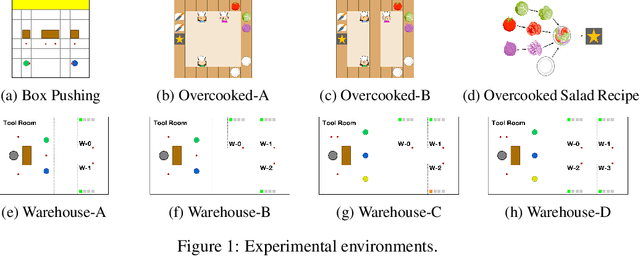



Abstract:Synchronizing decisions across multiple agents in realistic settings is problematic since it requires agents to wait for other agents to terminate and communicate about termination reliably. Ideally, agents should learn and execute asynchronously instead. Such asynchronous methods also allow temporally extended actions that can take different amounts of time based on the situation and action executed. Unfortunately, current policy gradient methods are not applicable in asynchronous settings, as they assume that agents synchronously reason about action selection at every time step. To allow asynchronous learning and decision-making, we formulate a set of asynchronous multi-agent actor-critic methods that allow agents to directly optimize asynchronous policies in three standard training paradigms: decentralized learning, centralized learning, and centralized training for decentralized execution. Empirical results (in simulation and hardware) in a variety of realistic domains demonstrate the superiority of our approaches in large multi-agent problems and validate the effectiveness of our algorithms for learning high-quality and asynchronous solutions.
On Optimizing Interventions in Shared Autonomy
Jan 01, 2022
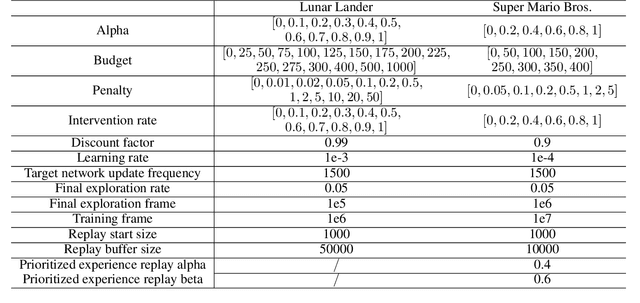

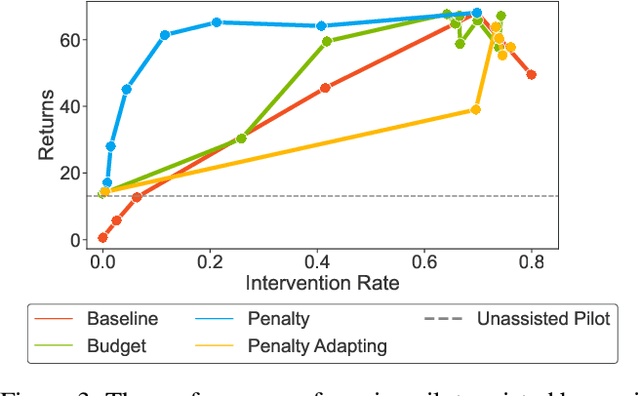
Abstract:Shared autonomy refers to approaches for enabling an autonomous agent to collaborate with a human with the aim of improving human performance. However, besides improving performance, it may often also be beneficial that the agent concurrently accounts for preserving the user's experience or satisfaction of collaboration. In order to address this additional goal, we examine approaches for improving the user experience by constraining the number of interventions by the autonomous agent. We propose two model-free reinforcement learning methods that can account for both hard and soft constraints on the number of interventions. We show that not only does our method outperform the existing baseline, but also eliminates the need to manually tune a black-box hyperparameter for controlling the level of assistance. We also provide an in-depth analysis of intervention scenarios in order to further illuminate system understanding.
Strategy and Benchmark for Converting Deep Q-Networks to Event-Driven Spiking Neural Networks
Sep 30, 2020
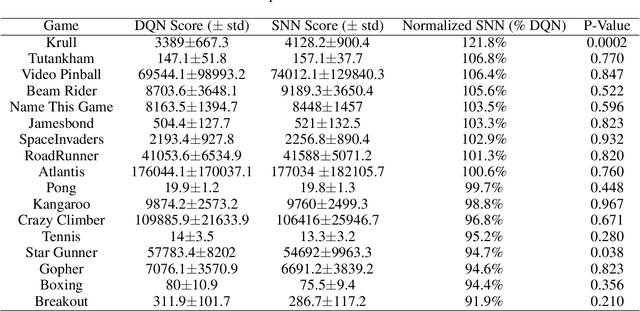

Abstract:Spiking neural networks (SNNs) have great potential for energy-efficient implementation of Deep Neural Networks (DNNs) on dedicated neuromorphic hardware. Recent studies demonstrated competitive performance of SNNs compared with DNNs on image classification tasks, including CIFAR-10 and ImageNet data. The present work focuses on using SNNs in combination with deep reinforcement learning in ATARI games, which involves additional complexity as compared to image classification. We review the theory of converting DNNs to SNNs and extending the conversion to Deep Q-Networks (DQNs). We propose a robust representation of the firing rate to reduce the error during the conversion process. In addition, we introduce a new metric to evaluate the conversion process by comparing the decisions made by the DQN and SNN, respectively. We also analyze how the simulation time and parameter normalization influence the performance of converted SNNs. We achieve competitive scores on 17 top-performing Atari games. To the best of our knowledge, our work is the first to achieve state-of-the-art performance on multiple Atari games with SNNs. Our work serves as a benchmark for the conversion of DQNs to SNNs and paves the way for further research on solving reinforcement learning tasks with SNNs.
MUSEFood: Multi-sensor-based Food Volume Estimation on Smartphones
Mar 19, 2019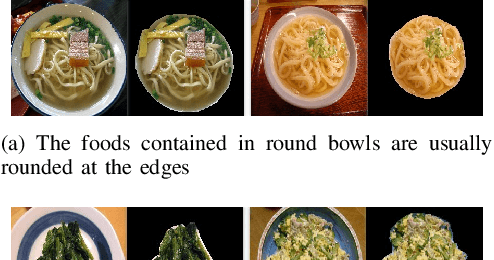
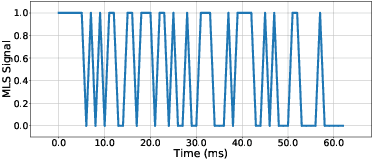

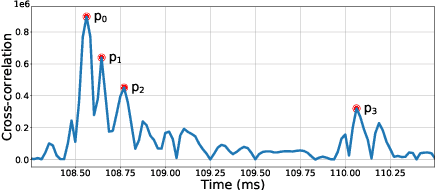
Abstract:Researches have shown that diet recording can help people increase awareness of food intake and improve nutrition management, and thereby maintain a healthier life. Recently, researchers have been working on smartphone-based diet recording methods and applications that help users accomplish two tasks: record what they eat and how much they eat. Although the former task has made great progress through adopting image recognition technology, it is still a challenge to estimate the volume of foods accurately and conveniently. In this paper, we propose a novel method, named MUSEFood, for food volume estimation. MUSEFood uses the camera to capture photos of the food, but unlike existing volume measurement methods, MUSEFood requires neither training images with volume information nor placing a reference object of known size while taking photos. In addition, considering the impact of different containers on the contour shape of foods, MUSEFood uses a multi-task learning framework to improve the accuracy of food segmentation, and uses a differential model applicable for various containers to further reduce the negative impact of container differences on volume estimation accuracy. Furthermore, MUSEFood uses the microphone and the speaker to accurately measure the vertical distance from the camera to the food in a noisy environment, thus scaling the size of food in the image to its actual size. The experiments on real foods indicate that MUSEFood outperforms state-of-the-art approaches, and highly improves the speed of food volume estimation.
 Add to Chrome
Add to Chrome Add to Firefox
Add to Firefox Add to Edge
Add to Edge